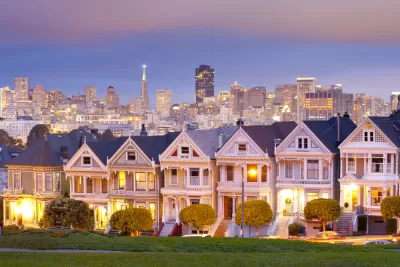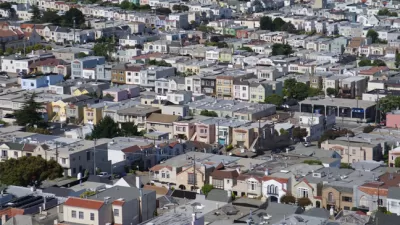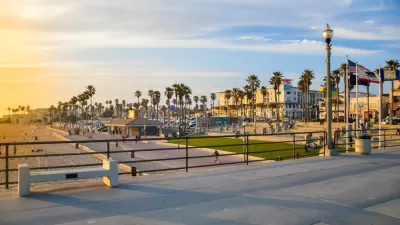The Golden State may have the nation's most severe housing crisis, but there is one area of state housing policy where it shines, becoming a model for other states that want to advance accessory dwelling units, also called granny or in-law units.

The Associated Press reported May 4 that the California economy is now the fifth largest in the world, after the U.S., China, Japan and Germany. Paradoxically, the state suffers the highest poverty rate in the nation when the cost of living, driven largely by high housing costs, is considered, according to the California Budget & Policy Center.
While housing construction hasn't kept pace with population growth for decades, many cities throughout the state have just recently greatly increased processing of accessory dwelling unit or ADU applications after the state passed legislation in 2016 that greatly facilitates construction of these small, affordable-by-design units that can be added to neighborhoods composed largely of single-family homes.
In an article posted April 27 on Next City, Jared Brey traces the regulatory reform movement to a 2014 ordinance [pdf] passed by San Francisco supervisors that allowed owners to legalize one accessory unit per residential lot [pdf]. The American Planning Association awarded San Francisco's Accessory Dwelling Unit and Unit Legalization Program a National Planning Achievement Award this year.
A few years later, the city created a neighborhood pilot program to legalize and streamline the construction of new ADUs — including backyard cottages as well as converted garages or basements. The program later became citywide, and was followed up with statewide laws aimed at achieving the same ends.
========================================================================================================================
In January, Josh Cohen reported for Next City on a surge of ADU applications throughout California resulting from cities changing their permitting regulations to conform to two bills passed in 2016: SB 1069 from Sen. Bob Wieckowski (D-Fremont) and AB 2299 from Assemblyman Richard Bloom (D-Santa Monica). The basis for the data is a December 2017 report [pdf] by the University of California Berkley’s Terner Center for Housing Innovation, the topic of a post that month by Planetizen editor James Brasuell.
“I expected to see a jump, given the recent legislation, but I didn’t expect to see such a dramatic jump,” says report author David Garcia, Terner Center’s policy director. “California basically legalized ADUs throughout the state on January 1, 2017. It turned out, there was quite a pent-up demand from homeowners.”
Another bill signed into law in 2016 regulating ADUs hasn't received nearly as much attention but is more far-reaching and shows the state's commitment to try "innovative strategies to create new housing units," in the words of Garcia, as it creates a new subset of even smaller "second" units, no more than 500 square feet. Kathleen Pender, business columnist for the San Francisco Chronicle who covers real estate, included it in her Dec. 3, 2016 column on the year's three new "granny unit laws".
A third law, AB 2406 [by Assemblymember Tony Thurmond (D-Richmond)], which took effect when Gov. Jerry Brown signed it in September, gives cities the option of allowing homeowners to create a “junior accessory dwelling unit” [or JADU]. This is a unit created within an existing bedroom that has an efficiency kitchen (no gas or appliances requiring 220 volts) and an interior connection to the main house.
More bills passed and more in the pipeline
2016 was just the start of the legislature legalizing and encouraging ADUs. Last year the same two legislators responsible for the two major ADU laws in 2016, Sen. Bob Wieckowski of Fremont and Assemblyman Richard Bloom of Santa Monica, authored follow-up bills that were signed into law by Gov. Jerry Brown to further facilitate permitting and construction of ADUs: SB 229 (see his press release) and AB 494, respectively. And they are still at it this year.
Bloom introduced AB 2071 and Wieckowski introduced a new bill as well – from his Jan. 8 news release:
SB 831 builds on this success by taking several steps, including eliminating all local fees for an ADU; creating a temporary amnesty program to evaluate existing unpermitted units; holding local agencies accountable through the [California Department of Housing & Community Development]; and deeming ADU permit applications to be automatically approved if an agency has not acted upon the application within 120 days.
A third legislator, Sen. Nancy Skinner (D-Berkeley), also sponsored ADU legislation this year. From her April 25 news release:
While recent legislation has eased the process for homeowners to create ADUs and JADUs, SB 1469 addresses barriers that have persisted. SB 1469 would allow ADUs in multifamily buildings, offer additional fee relief for constructing ADUs, further increase flexibility for parking and establish clear, consistent building standards for ADUs/JADUs.
=========================================================================================================================
New York City metropolitan area takes notice
"In its 'Fourth Regional Plan' for the New York City metro area, the Regional Plan Association recommended [pdf] that municipalities revise zoning laws to incentivize the development of ADUs and the subdivision of single-family homes," observes Brey of Next City.
For ADUs, says Moses Gates, director of community planning and design at the RPA, the real obstacle isn’t available land or financing but zoning rules. And cities in the New York region need to move faster to change their zoning codes to make ADUs easier to build. Gates noted that the city is pursuing a pilot program to encourage new ADUs in East New York, but says that pilot programs are ultimately too timid, and the city should adopt new policies that apply citywide.
Of course, that's how San Francisco partially started, with an ADU pilot program, but what really made the breakthrough were state legislators who continue to be committed to advance innovative housing strategies. The RPA's Gates said it best:
“The biggest thing California is doing is taking a statewide approach,” Gates says. “What is going to solve the problem is scale, and you don’t reach scale by picking away at a few blocks here and a neighborhood there. The state has to step in with some real muscle to make a solution scalable.”
Extra viewing
The state Senate spotlight features a 22-minute video on ADUs, with a focus on SB 831, with Sen. Wieckowski and Matt Regan of the Bay Area Council, which sponsored ADU legislation, as guests. Regan states that Vancouver, British Columbia is considered the "gold standard" when it comes to ADU legislation.
Over a third of single-family homes have accessory dwelling units. They've been doing this for 20-plus years.
FULL STORY: The Truth About Affordable Housing in Our Backyards

Alabama: Trump Terminates Settlements for Black Communities Harmed By Raw Sewage
Trump deemed the landmark civil rights agreement “illegal DEI and environmental justice policy.”

Study: Maui’s Plan to Convert Vacation Rentals to Long-Term Housing Could Cause Nearly $1 Billion Economic Loss
The plan would reduce visitor accommodation by 25% resulting in 1,900 jobs lost.

Planetizen Federal Action Tracker
A weekly monitor of how Trump’s orders and actions are impacting planners and planning in America.

Wind Energy on the Rise Despite Federal Policy Reversal
The Trump administration is revoking federal support for renewable energy, but demand for new projects continues unabated.

Passengers Flock to Caltrain After Electrification
The new electric trains are running faster and more reliably, leading to strong ridership growth on the Bay Area rail system.

Texas Churches Rally Behind ‘Yes in God’s Back Yard’ Legislation
Religious leaders want the state to reduce zoning regulations to streamline leasing church-owned land to housing developers.
Urban Design for Planners 1: Software Tools
This six-course series explores essential urban design concepts using open source software and equips planners with the tools they need to participate fully in the urban design process.
Planning for Universal Design
Learn the tools for implementing Universal Design in planning regulations.
Caltrans
Smith Gee Studio
Institute for Housing and Urban Development Studies (IHS)
City of Grandview
Harvard GSD Executive Education
Toledo-Lucas County Plan Commissions
Salt Lake City
NYU Wagner Graduate School of Public Service




























